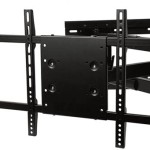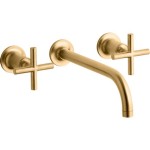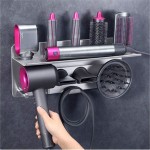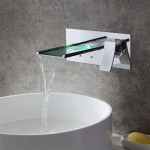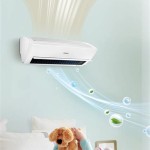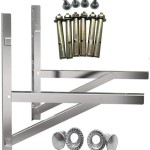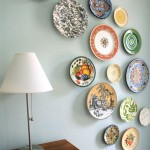Best TV Mounts for Plaster Walls: A Comprehensive Guide
Mounting a television on a plaster wall presents unique challenges compared to drywall or concrete. Plaster, often found in older homes, is a more brittle and less structurally consistent material. Securing a TV mount requires careful consideration of the plaster’s integrity, the underlying lath (typically wood or metal), and the weight of the television. Choosing the wrong mounting hardware or installation technique can lead to damage to the wall, an unstable mount, or even the TV falling. This article will explore the factors to consider when selecting a TV mount for plaster walls, highlighting suitable mount types and providing guidance on proper installation to ensure a safe and secure setup.
Before diving into specific mounts, it is crucial to understand the composition of plaster walls. Traditional plaster walls are composed of multiple layers. First, lath strips are attached to the wall studs. These strips act as a base for the plaster. Subsequently, multiple coats of plaster are applied to the lath, creating a relatively smooth surface. This multi-layered construction, while offering a durable finish, can be problematic for mounting due to its potential for crumbling and the difficulty in locating studs accurately. The lath itself may be weak or degraded over time, further complicating the mounting process. Therefore, selecting a mounting solution that distributes weight effectively and minimizes stress on the plaster is paramount.
Understanding the Challenges of Mounting on Plaster
Plaster walls differ significantly from modern drywall, impacting mounting options. Drywall, composed of a uniform sheet of gypsum board, offers more consistent support and allows for the use of drywall anchors specifically designed for the material. Plaster, on the other hand, is prone to cracking and crumbling, especially around screw holes. The lath beneath the plaster, while providing some support, may not be consistently positioned or strong enough to bear the weight of a TV, particularly larger models. Furthermore, the thickness of plaster walls often varies, making it difficult to determine the appropriate screw length for secure anchoring. Another challenge lies in accurately locating wall studs behind the plaster. Traditional stud finders may not work effectively due to the density and composition of the plaster. This inaccuracy can lead to mounting screws being placed solely in the plaster and lath, resulting in a weak and potentially dangerous installation.
The weight of the television is a critical factor. Modern TVs can range from relatively lightweight to exceedingly heavy, especially larger screen sizes. The plaster wall must be able to bear not only the static weight of the TV but also any dynamic forces exerted when tilting or swiveling the screen. A full-motion TV mount, while offering greater viewing flexibility, places significantly more stress on the wall compared to a fixed mount. Therefore, assessing the weight capacity of both the mount and the wall is crucial. If the wall shows any signs of weakness or damage, such as cracks or crumbling, it may be necessary to reinforce the wall before mounting a TV. This could involve adding additional lath or even replacing sections of the plaster. Consulting with a professional contractor is recommended in such cases.
Choosing the right hardware is also essential. Standard drywall screws are not suitable for plaster walls. These screws are designed to grip and expand within the drywall, but they tend to strip out in plaster. Instead, specialized plaster screws or toggle bolts are recommended. Plaster screws are designed with deeper threads that can grip the lath more effectively. Toggle bolts, on the other hand, provide a more secure anchor by distributing the weight over a larger area behind the wall. When using toggle bolts, it is important to choose a bolt length that is appropriate for the thickness of the wall. A bolt that is too short will not engage the toggle properly, while a bolt that is too long will protrude from the wall and may interfere with the TV mount.
Recommended TV Mount Types for Plaster Walls
Several types of TV mounts are suitable for plaster walls, each with its own advantages and disadvantages. The best choice depends on the size and weight of the TV, the desired viewing angle, and the structural integrity of the wall.
Fixed TV Mounts: These are the simplest and often the most secure option for plaster walls. Fixed mounts keep the TV close to the wall and do not offer any tilting or swiveling capabilities. This minimizes stress on the mounting points and reduces the risk of the mount pulling away from the wall. Fixed mounts are best suited for situations where the viewing angle is already optimal and no adjustments are needed. They are also a good choice for heavier TVs, as they distribute the weight more evenly across the wall. When installing a fixed mount, it is crucial to ensure that at least two of the mounting screws are securely anchored into wall studs. If studs are not available at the desired mounting location, toggle bolts can be used to provide additional support.
Tilting TV Mounts: Tilting mounts allow the TV to be tilted up or down, which can improve viewing angles and reduce glare. However, tilting mounts place slightly more stress on the wall compared to fixed mounts. It is important to choose a tilting mount that is specifically designed for plaster walls and has a robust locking mechanism to prevent the TV from shifting or swaying. As with fixed mounts, it is recommended to anchor at least two of the mounting screws into wall studs. If studs are not available, toggle bolts can be used. When tilting the TV, avoid excessive angles, as this can increase the stress on the mounting points.
Full-Motion TV Mounts (Articulating Mounts): Full-motion mounts offer the greatest flexibility, allowing the TV to be swiveled, tilted, and extended away from the wall. However, they also place the most stress on the wall. Full-motion mounts are generally not recommended for plaster walls unless the wall is particularly strong and the TV is relatively lightweight. If a full-motion mount is necessary, it is crucial to choose a high-quality mount with a sturdy arm and a wide mounting plate to distribute the weight effectively. Furthermore, it is essential to anchor all of the mounting screws into wall studs. If studs are not available, it may be necessary to reinforce the wall with a backing board or additional lath. Installing a full-motion mount on a plaster wall requires careful planning and attention to detail to ensure a safe and secure installation. Due to their complexity and the increased risk of damage, professional installation is highly recommended for full-motion mounts on plaster walls.
Key Considerations for Installation
Successful TV mounting on plaster walls hinges on careful planning and execution. Prior to any drilling, a comprehensive assessment of the wall’s condition is mandatory. Look for cracks, crumbling plaster, or signs of previous damage. These issues indicate potential weakness and may require repair or reinforcement before proceeding. Accurately locate the wall studs using a stud finder designed for thick walls or by manually probing with a thin nail. Mark the stud locations clearly. The stud spacing, typically 16 or 24 inches on center, is crucial for aligning the mount correctly. If relying on a stud finder, verify its accuracy by driving a small nail into the suspected stud location. Resistance confirms the presence of a stud; if the nail passes through easily, it indicates an empty space. Remember, plaster walls can contain obstructions like pipes or wiring, so exercise caution when drilling.
The installation process itself requires precision. Use a drill bit specifically designed for plaster to minimize chipping and cracking. Start with a pilot hole smaller than the diameter of the screw or bolt, gradually increasing the size as needed. This prevents the plaster from crumbling around the hole. When using screws, avoid over-tightening, as this can strip the threads or crack the plaster. Apply even pressure and stop when the screw is snug but not excessively tight. For toggle bolts, follow the manufacturer's instructions carefully. Ensure the toggle wings are fully deployed behind the wall before tightening. Periodically check the mount for stability after installation. Gently push and pull on the TV to assess its security. If any movement or instability is detected, re-tighten the screws or bolts, or consider adding additional anchors. Regular inspections of the mount are advisable to ensure continued stability, especially for full-motion mounts. Over time, vibrations or accidental bumps can loosen the hardware.
Concealing cables is an important aspect of any TV mounting project. Running cables behind the wall creates a cleaner and more professional appearance. However, with plaster walls, it is essential to proceed with caution. Drilling large holes for cable access can weaken the wall and create unsightly damage. Consider using surface-mounted cable raceways or paintable cord covers instead. These options provide a discreet way to conceal cables without compromising the integrity of the wall. If in-wall cable routing is necessary, consult with a qualified electrician to ensure compliance with building codes and to avoid damaging any concealed wiring or plumbing.
Essential Tools and Materials
Having the right tools and materials is critical for a successful TV mount installation on plaster walls. A high-quality drill, preferably a cordless drill with adjustable torque settings, is essential. A stud finder specifically designed for thick walls or a manual probing tool is necessary for locating studs accurately. A set of drill bits designed for plaster, including a range of sizes for pilot holes and anchor holes, is crucial. Select appropriate mounting hardware, such as plaster screws or toggle bolts, based on the weight of the TV and the type of mount being used. A level is indispensable for ensuring the TV is mounted straight. Include a measuring tape for accurate placement of the mount and cable management accessories, such as cable ties or raceways, for organizing and concealing cables. Safety glasses and gloves are recommended to protect against dust and debris.
Choosing the right TV mount for a plaster wall involves careful consideration of the wall's condition, the weight of the TV, and the type of mount required. Proper installation techniques and the use of appropriate hardware are essential for ensuring a safe and secure setup. While fixed and tilting mounts are generally suitable for plaster walls, full-motion mounts should be approached with caution and may require professional installation. It is important to prioritize safety and stability above all else. If unsure about any aspect of the installation process, consulting with a professional contractor or electrician is highly recommended.

How To Mount Tv On Plaster Lath Wall Magnetic Stud Finder For Walls Youtube

Mounting Tv On Plaster Wall No Studs

One Stud Tv Mount In Plaster Wall Or Drywall Why Only Youtube

3 Best Tv Wall Mounts Of 2025
The 9 Best Tv Wall Mounts Of 2025

3 Best Tv Wall Mounts Of 2025

How To Mount Tv On Plaster Wall Easily Magnetic Stud Finder Tips Youtube

The 4 Best Tv Wall Mounts Of 2025 Reviews By Wirecutter

How To Choose The Best Tv Mount Consumer Reports

How To Hang A Tv On Plaster Wall Best Anchoring Practices

